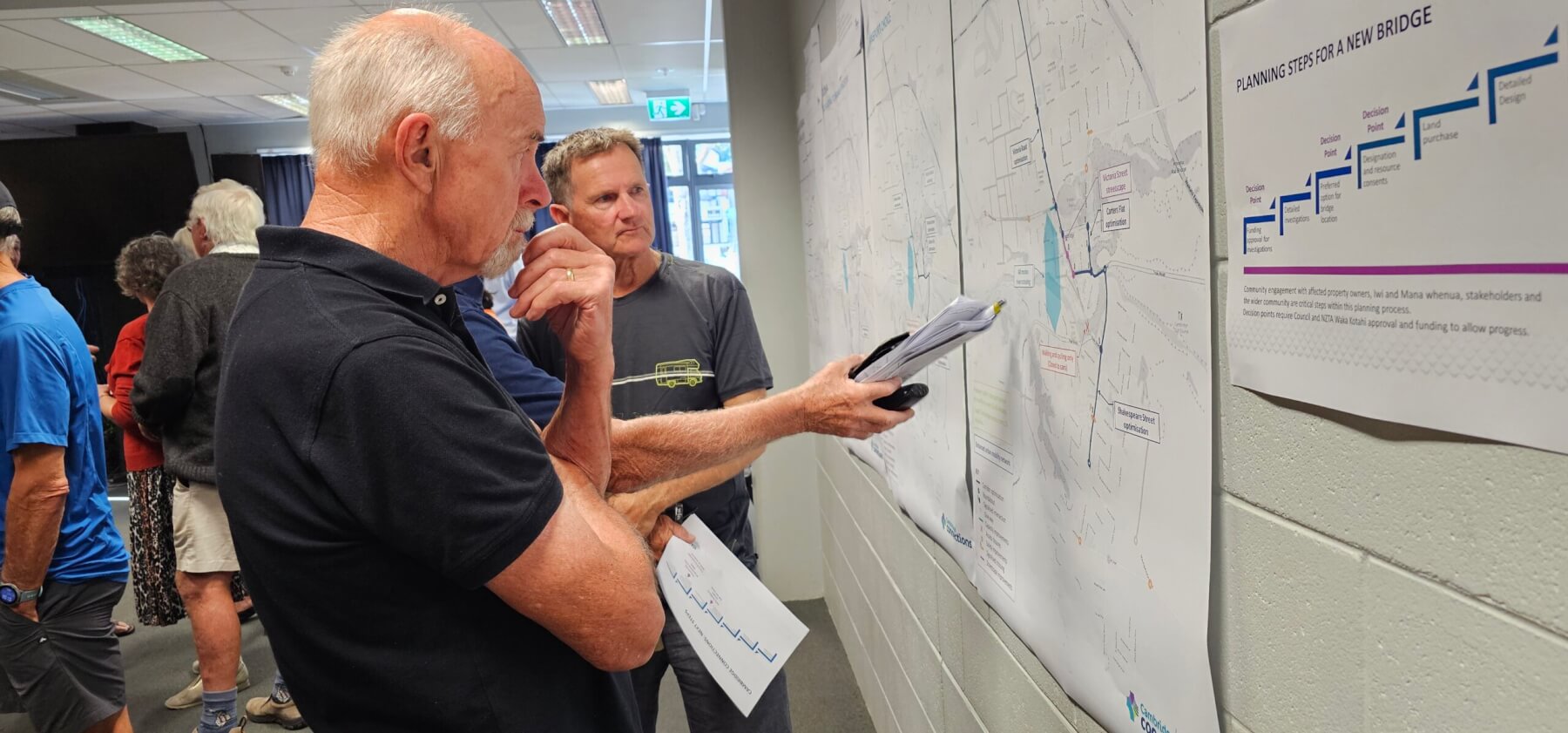
Susan O’Regan at Cambridge Connections drop in meeting where she was threatened.
Waipā activated its Crisis Management team after the controversial Cambridge Connections meeting where mayor Susan O’Regan was allegedly threatened.

Members of the public look at the site of the blue blob at the March meeting. Photo: Mary Anne Gill.
The drop in meeting about the site for a third bridge over Waikato River -held at Bridges Church on March 21 – was abandoned when an estimated 500 plus people turned up.
Some lambasted staff and elected members about the plans to take huge swathes of long-established residential land for the project.
The fiasco would go on to be dubbed The Night of the Blue Blob – a reference to maps issued by the district council which showed large chunks of blue over hundreds of houses.
Council’s Audit and Risk committee met this week, and members were told the level of aggression at the meeting resulted in the Crisis Management team being activated to respond to community sentiment.
This “stabilised” the risk, resilience and risk advisor Genny Wilson told the committee. The team assessed the risk to O’Regan, elected members, staff and members of the public, she said.
It resulted in a “project reset” with all bridge locations taken off the table.
O’Regan then announced an independent review would be undertaken to see where the project could have done better, reflect on what had caused concern and reset the project to get it “back on track.”
WSP, formerly Opus International Consultants and before that a consultancy division of the old Works and Development Services Corporation, will undertake the review.
Part of the multi-national’s brief will be to look at how the business case for Cambridge Connections was developed and whether the project was consistent with Waka Kotahi New Zealand Transport Agency’s business case process.

Waipa mayor Susan O’Regan apologises at the Cambridge Connections drop in meeting. Photo: Mary Anne Gill.
The Waipā crisis team identified improvements to the council’s Threat and Response framework.
A new Meetings and Engagement stream has been added for risk assessment which include safety plans for common venues and procedures for operating meetings.
The council’s executive team would get a register of meetings on the go and discuss whether senior management should be included.
Part of the criticism of the March meeting was that many senior staff – including chief executive Garry Dyet and Service Delivery group manager Dawn Inglis – were not present.
It meant Community Services manager Brad Ward was left to abandon the disastrous meeting which had resorted into a moan fest towards Transport manager Bryan Hudson.
Neither man is a member of the executive team.
Meanwhile the committee also heard that while the organisation’s top risk remains inadequate workforce and capacity, communications and engagement with the community remains an “extreme” risk.
Commentary had been turned off on the council’s various social media platforms to allow for a more balanced perspective from the community, Wilson told the committee in her report.
Another big concern is what the report terms “Elected Member Cohesion”.
The next Long Term Plan will be developed close to the Māori ward referendum, representation review and local body election.
“If there is a lack of cohesion between elected members, there is a risk that this will impact the decisions elected members make,” the report signed off by Strategy group manager Kirsty Downey says.
“Decisions will be made that reflect that an election is close rather than necessarily being the best decision.”
Staff will continue to hold regular workshops with elected members, get key decisions made as early as possible and strengthen the mayor’s role in the Project Governance Group by having her take a more active role.

Cambridge Connections








